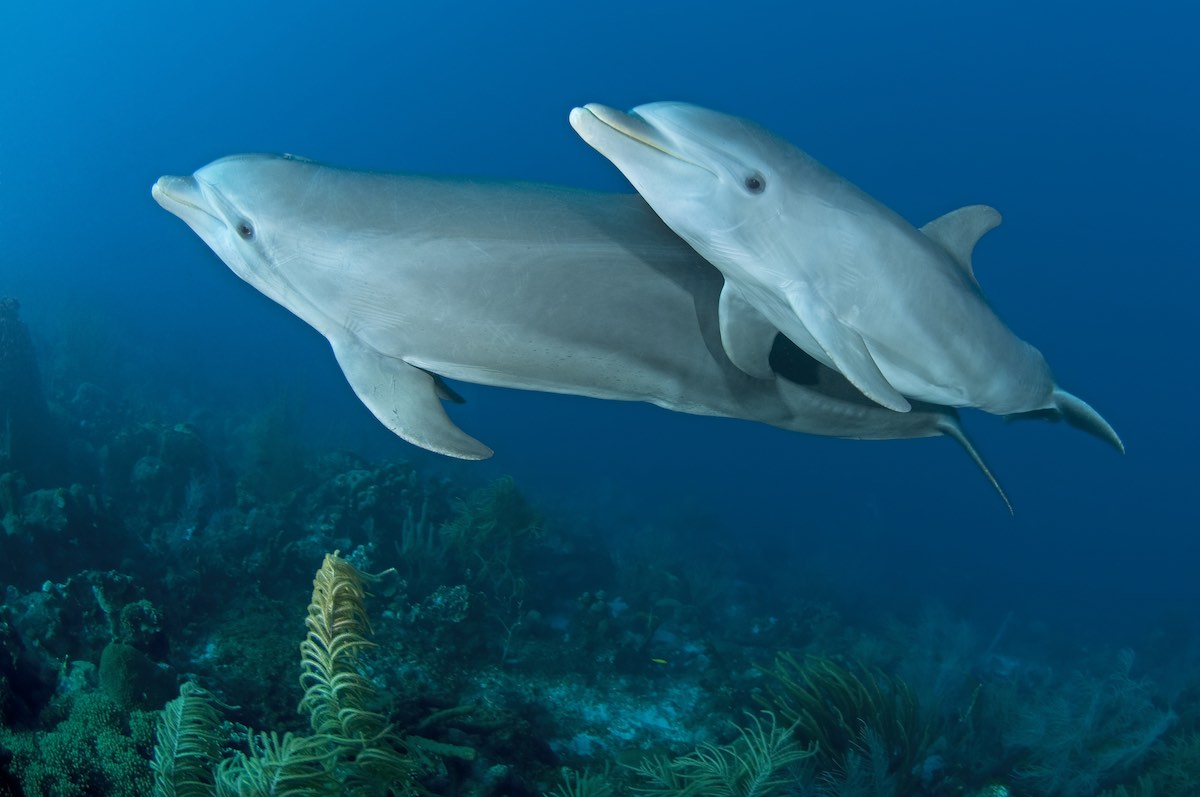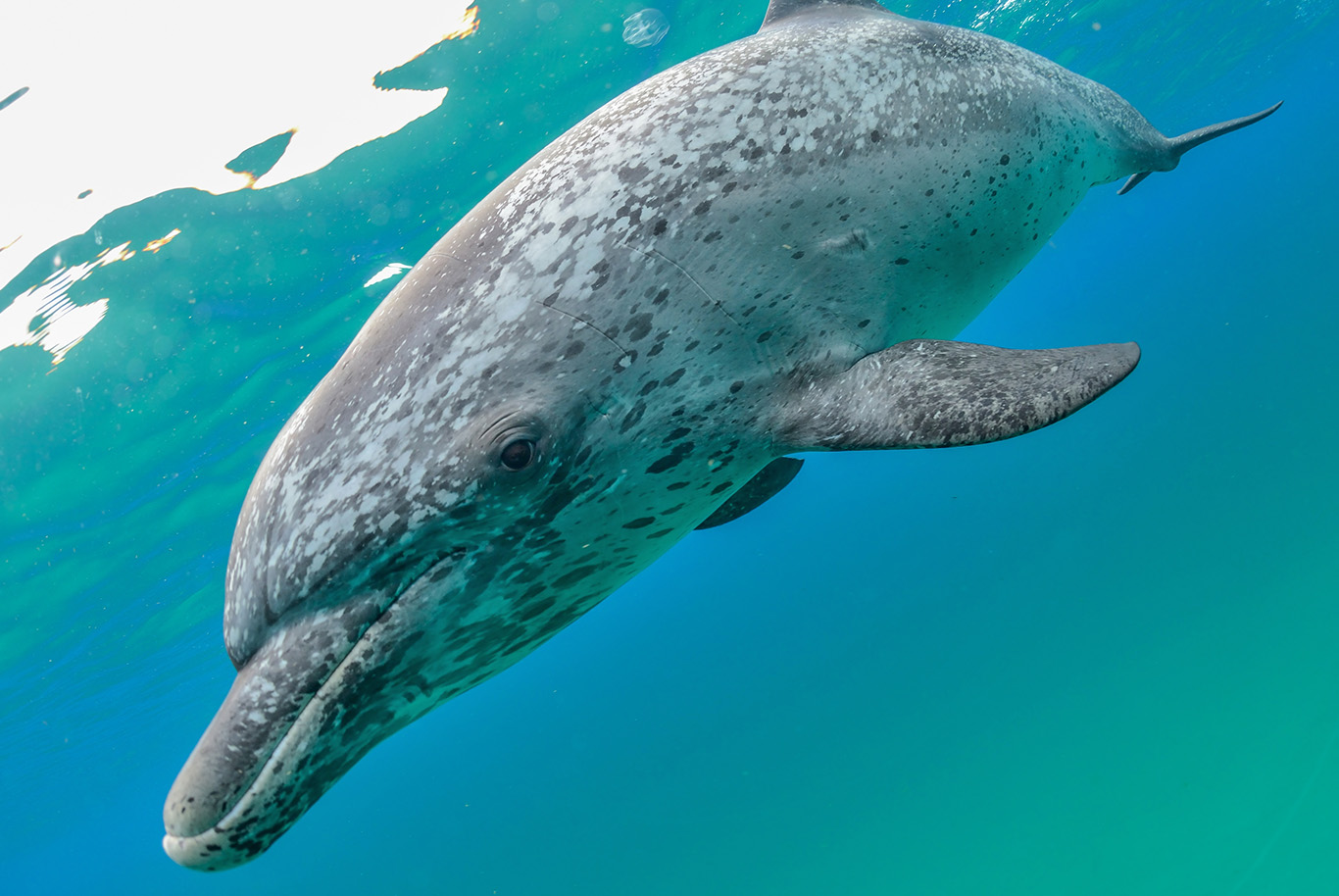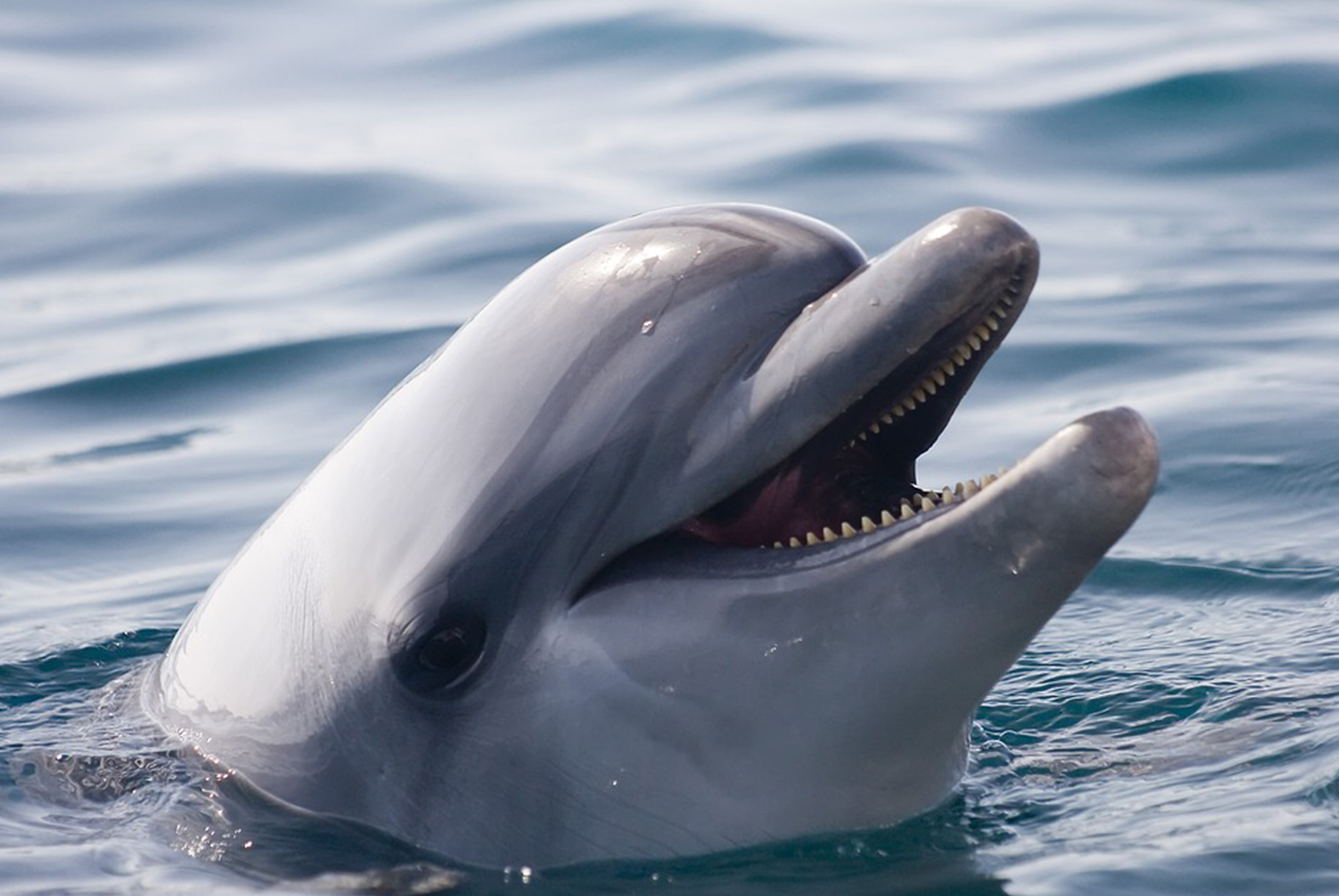How to Tell the Difference Between Dolphins and Porpoises
All of our puns are on porpoise

Dolphins and porpoises are some of the most charismatic critters in the ocean—but can you tell them apart? Although they might look alike at first glance, there are a few key differences that make it easy to tell which is which. Check them out below, then show off your knowledge next time you see one in the wild.
Let’s start with what they have in common: both dolphins and porpoises are cetaceans, an order of marine mammal that also includes whales. They’re further classified as toothed whales along with belugas, narwhals and sperm whales. While they’re both highly intelligent, dolphins are typically more curious around humans than porpoises are. Both animals use echolocation, which uses sound to sense what is around them, to hunt for prey and find their peers.
Get Ocean Updates in Your Inbox
Sign up with your email and never miss an update.
To tell these two cetaceans apart, first look at the head. Dolphins typically have a bulbous head and often a clearly-defined “beak,” or long nose that sticks out from their face. Porpoises, on the other hand, usually have a rounder face without the pronounced beak. If you can’t get a good look at the head, take a peek at the fin. Dolphins have curved dorsal fins, where porpoises have dorsal fins that are more triangular in shape. This is one of the quickest ways to tell them apart, especially if you spot one while out on the water and can’t get a look at the whole animal.

If you are able to see the entire animal, you can tell the two apart by their size and shape. Dolphins tend to have a sleeker, more streamlined body shape than porpoises. Dolphins are also often longer, averaging about six to 12 feet in length, where porpoises only reach a maximum seven feet in length. The smallest toothed whale is the vaquita, an extremely endangered species that only grows to about four feet and 120 pounds.
Fun fact—orcas and pilot whales are technically part of the dolphin family, but they’re called “whales” because of their size. If a dolphin or porpoise species reaches more than 30 feet, they’re referred to as whales.
If you get a really good look, examine its teeth. Dolphins’ teeth are cone-shaped, while porpoises’ teeth are spade-shaped. Although, let’s be honest—if you’re close enough to see the specific shape of their teeth, you’re probably a little too close. If you’re still unsure about the difference between the two, the odds could be in your favor—there are 33 species of dolphin and only six species of porpoise.

Despite their differences, dolphins and porpoises face a number of similar threats, including entanglement in fishing gear, climate change, ship strikes, pollution and habitat loss. You can use your new taxonomic knowledge to help protect dolphins and porpoises—if you see one stranded on the beach, you can report it to NOAA here. This helps managers investigate the cause of the problem and potentially protect other animals from harm.
In short, if you come across a sleek, large cetacean with a defined beak and a hooked dorsal fin, you’re likely looking at a dolphin. On the other hand, if you’re looking at a smaller, chunky animal with a round face and triangular dorsal fin, you’ve probably found a porpoise. Now to put those ID skills to the test—get out on the water and let us know what you see!